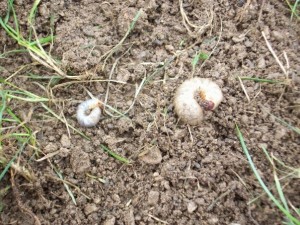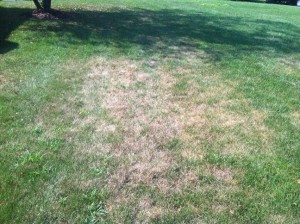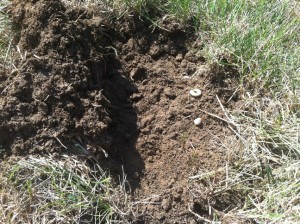 What should you look for with grubs?
What should you look for with grubs?
What are grubs?
 Grub damage is easy to diagnose. Just simply tug on areas of your turf and look underneath. Since grubs feed on root systems, the grass will pull up like a piece of new sod and the grubs won’t be hard to find. The more grubs you find in a square foot, the worse your problem is. Even if grass is still green, you could still have grub damage, so start hunting and inspecting areas of your lawn. Some years with ample rainfall and mild temperatures will keep the grass growing as grubs are feeding. But make no mistake, it’s time for you to do something about these devastating lawn pests.
Grub damage is easy to diagnose. Just simply tug on areas of your turf and look underneath. Since grubs feed on root systems, the grass will pull up like a piece of new sod and the grubs won’t be hard to find. The more grubs you find in a square foot, the worse your problem is. Even if grass is still green, you could still have grub damage, so start hunting and inspecting areas of your lawn. Some years with ample rainfall and mild temperatures will keep the grass growing as grubs are feeding. But make no mistake, it’s time for you to do something about these devastating lawn pests.What to do about grubs?
Apply Corrective Grub Control
No matter what your lawn looks like, if you are finding lots of grub activity you’ll want to apply a corrective grub control application. This is not the same material used earlier in the year for prevention. This granular material is a quick-control material with little to no residual activity. You will need to water it in thoroughly. Remember, those grubs are down a couple inches below the grass, so you’ll want to dissolve the granular material and get it down there to work. Water it in as soon as possible. Some materials start to lose their effectiveness if not watered in within 24-48 hours.
Seed Areas as Needed
If you have areas of dead turf, you’ll need to re-seed them. Some areas will need to be scraped clean, soil added, and seeded. However, some areas may just warrant slice-seeding to repair them. Either way, they aren’t coming back on their own.
Ramp-up Your Lawn Care Program
If you’ve been taking a minimalist approach, don’t be surprised when you get minimalist results. Preventive grub control is an application almost every lawn care program should include, or have added to it. Make sure you’re covered each year so grubs don’t destroy your lawn again. It’s less expensive to prevent than to fix after the fact.
Grubs can cause some havoc on a lawn. If you’re staring down at your lawn in disgust or frustration, find yourself an award-winning lawn care company that knows how to prevent or remedy your grub problems. If you would like to talk about lawn care options to deal with grubs or other lawn issues, or even to seed to repair your lawn, don’t hesitate to contact us.

